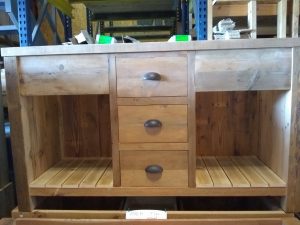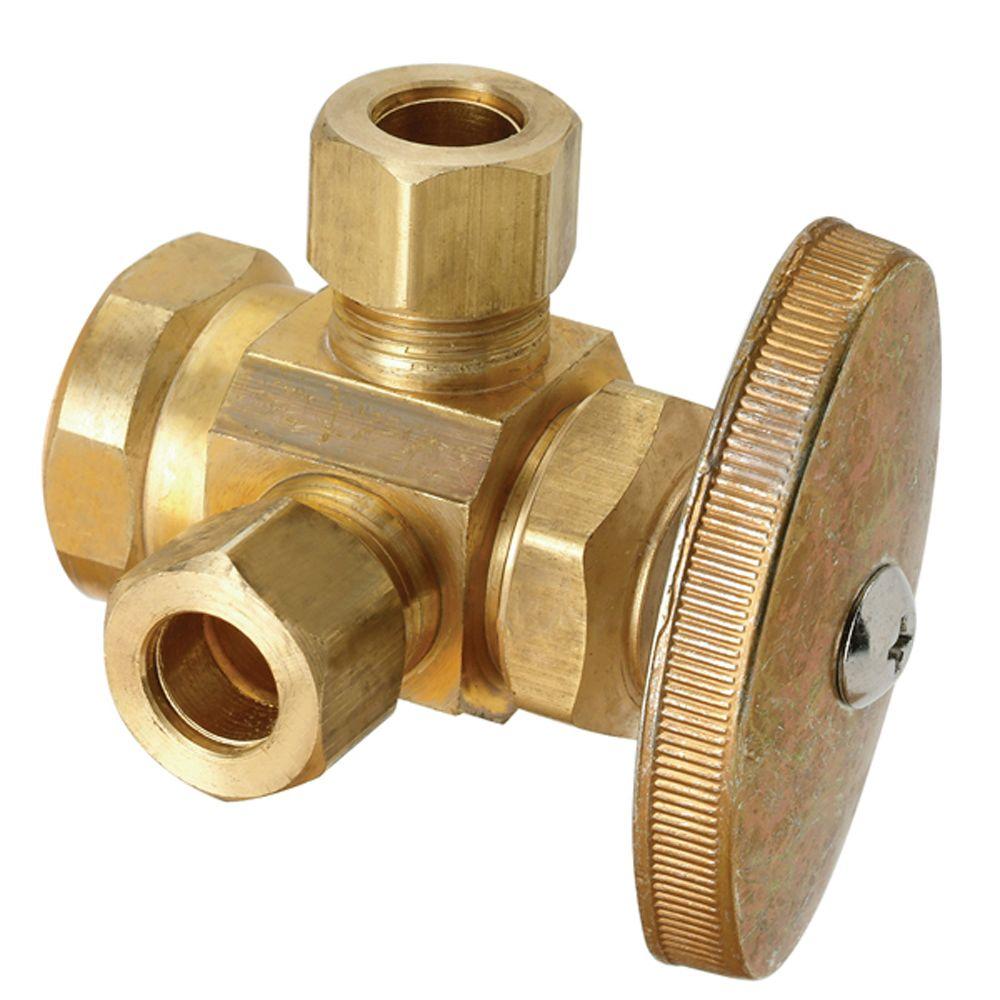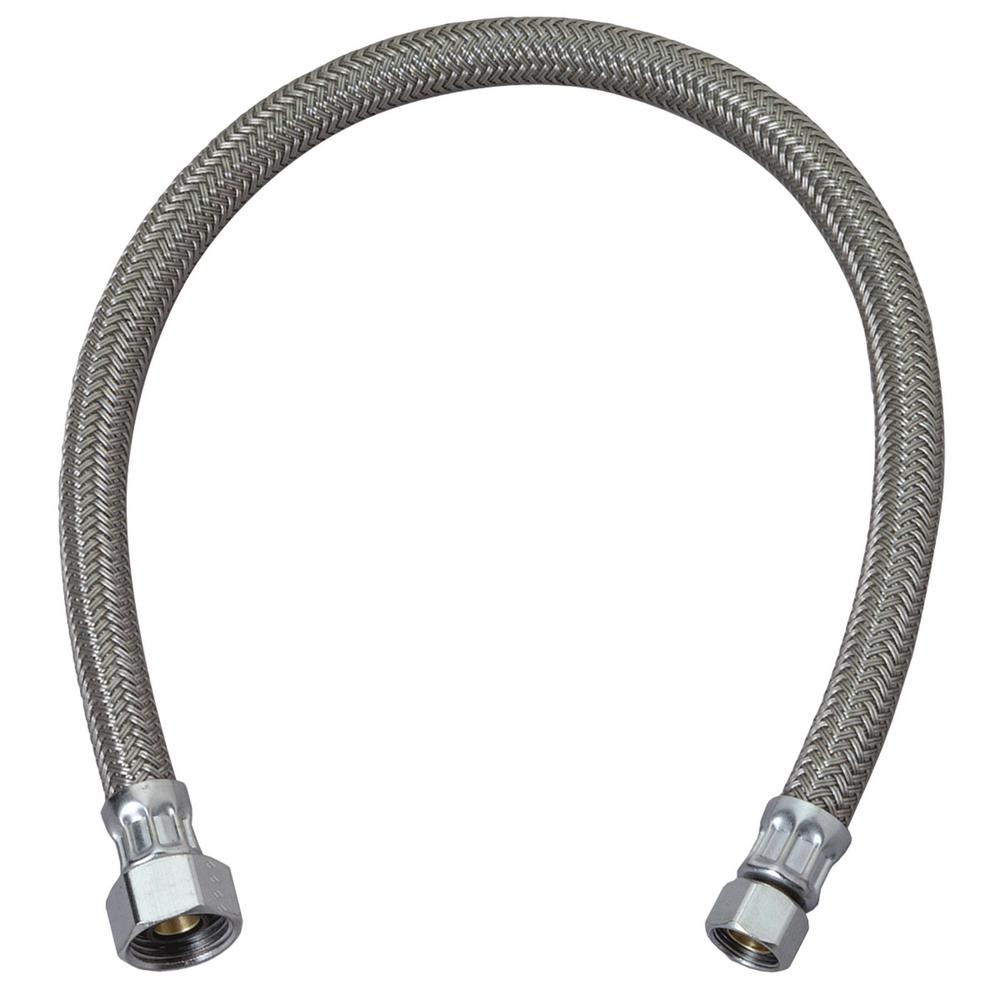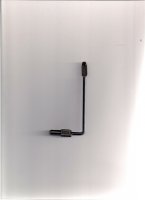I am looking at a double sink vanity for the master bathroom. Of course, my wife must have a vanity with open space beneath the sinks (and a set of drawers in between). Kinda like this

There are four supply angle stops that are located just off the floor and they will be just below the central drawers.
Does anyone have any elegant ideas to make the faucet connections? I'm thinking it would involve the use of solid risers within the open areas beneath the sinks, into a 90-degree brass elbow below the sink base, and to a braided flex connector to connect to the angle stops?

There are four supply angle stops that are located just off the floor and they will be just below the central drawers.
Does anyone have any elegant ideas to make the faucet connections? I'm thinking it would involve the use of solid risers within the open areas beneath the sinks, into a 90-degree brass elbow below the sink base, and to a braided flex connector to connect to the angle stops?



